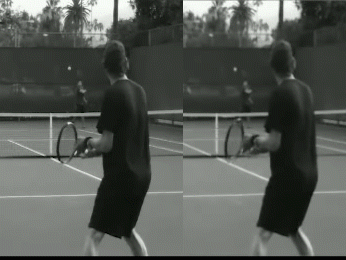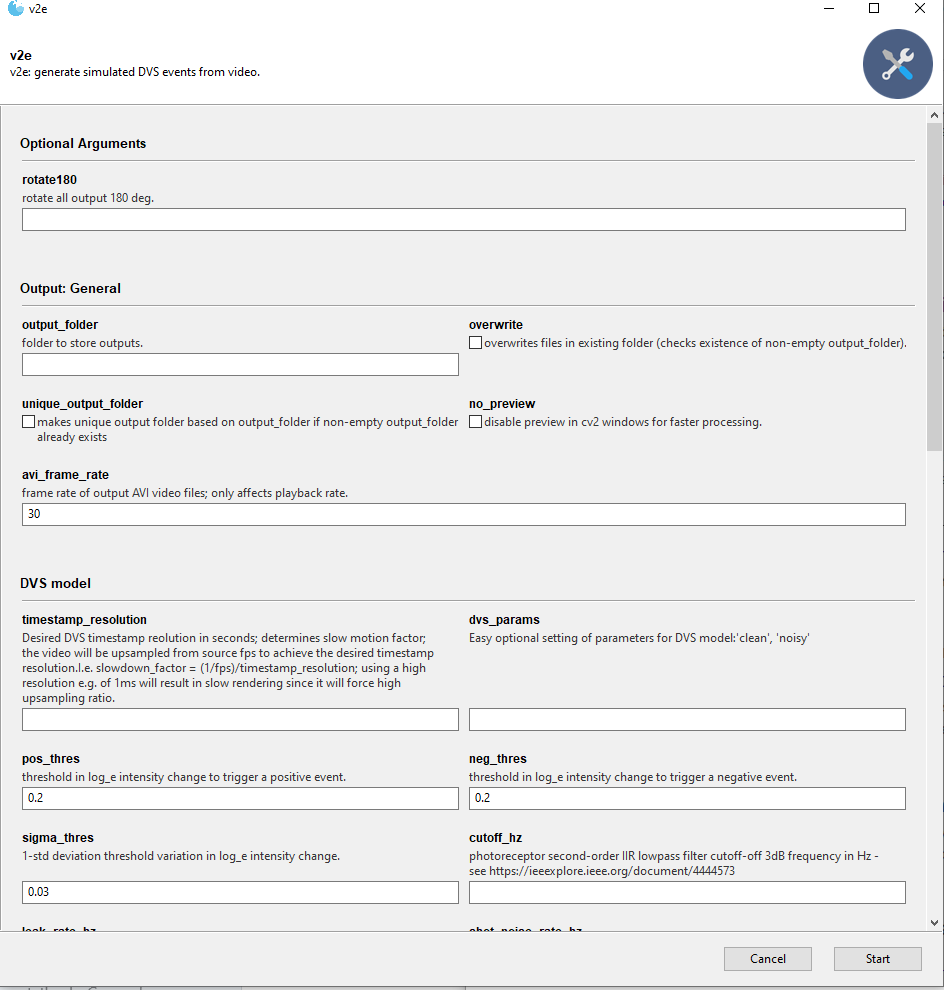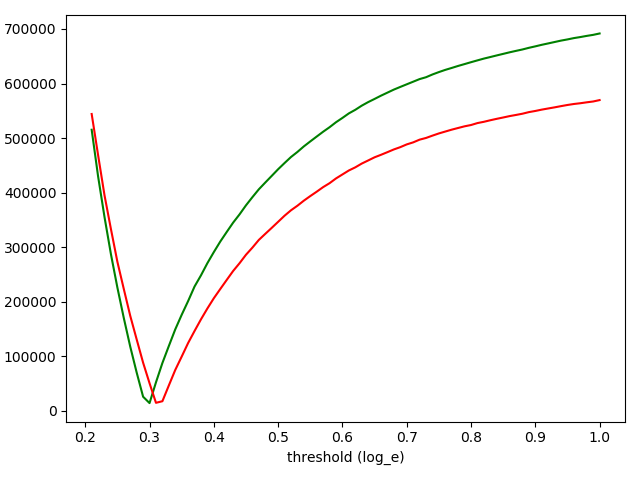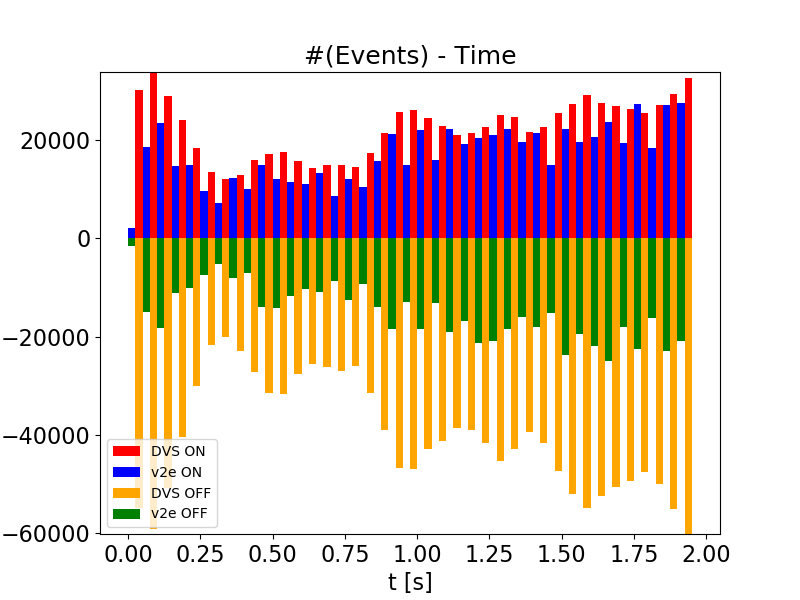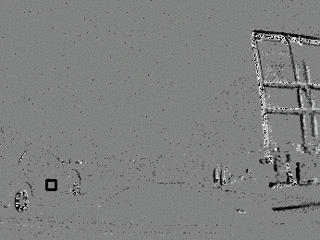v2e 
Python torch + opencv code to go from conventional stroboscopic video frames with low frame rate into realistic synthetic DVS event streams with much higher effective timing precision. v2e includes finite photoreceptor bandwidth, pixel to pixel event threshold variation, and noise 'leak' events.
See the v2e home page for videos and further information.
Vote for new v2e features.
Contact
Yuhuang Hu (yuhuang.hu@ini.uzh.ch) Zhe He (hezhehz@live.cn) Tobi Delbruck (tobi@ini.uzh.ch)
If you use v2e, we appreciate a citation to the paper below. See the v2e home page for futher background papers.
- T. Delbruck, Y. Hu, Z. He, "V2E: From video frames to realistic DVS event camera streams" in arXiv preprint, https://arxiv.org/abs/2006.07722, 2020
Environment
We encourage you to fork v2e and suggest pulls to improve the functionality.
NOTE We recommend running v2e on a CUDA GPU or it will be very slow. With a low-end GTX-1050, v2e runs about 50-200X slower than real time using 10X slowdown factor and 346x260 video.
python==3.7.7
Ubuntu 18.04 or Windows 10x64
CUDA GPU
(if you have not used CUDA on your GPU, you might need to install it from https://developer.nvidia.com/cuda-downloads)
Code includes pycharm project files for your convenience.
We highly recommend running the code in virtual environment. Conda is always your best friend. :). See https://docs.conda.io/projects/conda/en/latest/user-guide/tasks/manage-environments.html#create-env-from-file
For conda users, you can create your v2e environment and install everything to it with
conda env create -f environment.ymlYou can then update everything in your v2e conda environment with the following:
conda create -n v2e python=3.7 pip
conda activate v2e
conda env update --prefix ./v2e --file environment.ymlTo save your conda environment, use
conda env export --from-history >myenvironment.ymlPart of the v2e is numba accelerated, please install it via:
pip install numbaInstall the Package
Install v2e will make it available on your python path.
-
For developers, you should install the package with
develop(in your virtual environment):pip install -e .
Using -e will let you modify the code and see the results in your runtime without installing again. See https://stackoverflow.com/questions/19048732/python-setup-py-develop-vs-install .
-
For users of v2e.py, you can install the package with
install:pip install .
Usage
v2e serves multiple purposes. Please read to code if you would like to adapt it for your own application. Here, we only introduce the usage for generating DVS events from conventional video and from specific datasets.
GUI interface
A GUI based on Gooey is automatically started if Gooey is installed. (Gooey uses wxPython which can be hard to install on linux systems.) To disable the GUI, you can use the --ignore-gooey option. Gooey preloads its GUI with the command line options you provide. You can then run v2e multiple times from the same GUI.
Sample input data
The SuperSoMo model and sample input videos to try v2e with are in v2e-sample-input-data on google drive.
Download SuperSloMo model
We use the excellent Super SloMo framework to interpolate the APS frames. However, since APS frames only record light intensity, we retrained it on grayscale images. You can download our pre-trained model checkpoint from Google Drive [link] (151 MB).
mkdir -p input
mv SuperSloMo39.ckpt ./inputThe default value of --slomo_model argument is set to this location.
Render emulated DVS events from conventional video.
v2e.py reads a standard video (e.g. in .avi, .mp4, .mov, or .wmv) and generates emulated DVS events at upsampled timestamp resolution.
Do not be intimidated by the huge number of options. Running v2e.py with no arguments sets reasonable values and opens a file browser to let you select an input video. Inspect the logging output for hints.
Hint: Note the options [--dvs128 | --dvs240 | --dvs346 | --dvs640 | --dvs1024]; they set output size and width to popular cameras.
(base)$ conda activate pt-v2e # activate your workspace
(pt-v2e)$ python v2e.py -h --ignore-gooey
usage: v2e.py [-h] [-o OUTPUT_FOLDER] [--overwrite]
[--unique_output_folder UNIQUE_OUTPUT_FOLDER] [--no_preview]
[--avi_frame_rate AVI_FRAME_RATE]
[--auto_timestamp_resolution AUTO_TIMESTAMP_RESOLUTION]
[--timestamp_resolution TIMESTAMP_RESOLUTION]
[--output_height OUTPUT_HEIGHT] [--output_width OUTPUT_WIDTH]
[--dvs_params DVS_PARAMS] [--pos_thres POS_THRES]
[--neg_thres NEG_THRES] [--sigma_thres SIGMA_THRES]
[--cutoff_hz CUTOFF_HZ] [--leak_rate_hz LEAK_RATE_HZ]
[--shot_noise_rate_hz SHOT_NOISE_RATE_HZ]
[--dvs128 | --dvs240 | --dvs346 | --dvs640 | --dvs1024]
[--slomo_model SLOMO_MODEL] [--batch_size BATCH_SIZE]
[--vid_orig VID_ORIG] [--vid_slomo VID_SLOMO]
[--slomo_stats_plot] [-i INPUT]
[--input_slowmotion_factor INPUT_SLOWMOTION_FACTOR]
[--start_time START_TIME] [--stop_time STOP_TIME]
[--dvs_exposure DVS_EXPOSURE [DVS_EXPOSURE ...]]
[--dvs_vid DVS_VID] [--dvs_vid_full_scale DVS_VID_FULL_SCALE]
[--dvs_h5 DVS_H5] [--dvs_aedat2 DVS_AEDAT2]
[--dvs_text DVS_TEXT] [--dvs_numpy DVS_NUMPY]
[--rotate180 ROTATE180]
v2e: generate simulated DVS events from video.
optional arguments:
-h, --help show this help message and exit
--rotate180 ROTATE180
rotate all output 180 deg. (default: False)
Output: General:
-o OUTPUT_FOLDER, --output_folder OUTPUT_FOLDER
folder to store outputs. (default: v2e-output)
--overwrite overwrites files in existing folder (checks existence
of non-empty output_folder). (default: False)
--unique_output_folder UNIQUE_OUTPUT_FOLDER
makes unique output folder based on output_folder if
non-empty output_folder already exists (default: True)
--no_preview disable preview in cv2 windows for faster processing.
(default: False)
--avi_frame_rate AVI_FRAME_RATE
frame rate of output AVI video files; only affects
playback rate. (default: 30)
DVS timestamp resolution:
--auto_timestamp_resolution AUTO_TIMESTAMP_RESOLUTION
if False, --timestamp_resolution sets the upsampling
factor for input video. If True, upsampling_factor is
automatically determined to limit maximum movement
between frames to 1 pixel (default: True)
--timestamp_resolution TIMESTAMP_RESOLUTION
Desired DVS timestamp resolution in seconds;
determines slow motion upsampling factor; the video
will be upsampled from source fps to achieve the at
least this timestamp resolution.I.e. slowdown_factor =
(1/fps)/timestamp_resolution; using a high resolution
e.g. of 1ms will result in slow rendering since it
will force high upsampling ratio.Can be combind with
--auto_timestamp_resolution to limit upsamplingt to a
minimum value. (default: None)
DVS model:
--output_height OUTPUT_HEIGHT
Height of output DVS data in pixels. If None, same as
input video. Use --output_height=346 for Davis346.
(default: None)
--output_width OUTPUT_WIDTH
Width of output DVS data in pixels. If None, same as
input video. Use --output_width=260 for Davis346.
(default: None)
--dvs_params DVS_PARAMS
Easy optional setting of parameters for DVS
model:'clean', 'noisy'; 'clean' turns off noise and
makes threshold variation zero. 'noisy' sets limited
bandwidth and adds leak events and shot noise.
(default: None)
--pos_thres POS_THRES
threshold in log_e intensity change to trigger a
positive event. (default: 0.2)
--neg_thres NEG_THRES
threshold in log_e intensity change to trigger a
negative event. (default: 0.2)
--sigma_thres SIGMA_THRES
1-std deviation threshold variation in log_e intensity
change. (default: 0.03)
--cutoff_hz CUTOFF_HZ
photoreceptor second-order IIR lowpass filter cutoff-
off 3dB frequency in Hz - see
https://ieeexplore.ieee.org/document/4444573 (default:
300)
--leak_rate_hz LEAK_RATE_HZ
leak event rate per pixel in Hz - see
https://ieeexplore.ieee.org/abstract/document/7962235
(default: 0.01)
--shot_noise_rate_hz SHOT_NOISE_RATE_HZ
Temporal noise rate of ON+OFF events in darkest parts
of scene; reduced in brightest parts. (default: 0.001)
SloMo upsampling (see also "DVS timestamp resolution" group):
--slomo_model SLOMO_MODEL
path of slomo_model checkpoint. (default:
input/SuperSloMo39.ckpt)
--batch_size BATCH_SIZE
Batch size in frames for SuperSloMo. Batch size 8-16
is recommended if your GPU has sufficient memory.
(default: 8)
--vid_orig VID_ORIG Output src video at same rate as slomo video (with
duplicated frames). (default: video_orig.avi)
--vid_slomo VID_SLOMO
Output slomo of src video slowed down by
slowdown_factor. (default: video_slomo.avi)
--slomo_stats_plot show a plot of slomo statistics (default: False)
Input:
-i INPUT, --input INPUT
Input video file; leave empty for file chooser dialog.
(default: None)
--input_slowmotion_factor INPUT_SLOWMOTION_FACTOR
Sets the known slow-motion factor of the input video,
i.e. if the input video is 10fps with
slowmotion_factor=2, it means that each input frame
represents (1/10)s/2=50ms. (default: 1.0)
--start_time START_TIME
Start at this time in seconds in video. Use None to
start at beginning of source video. (default: None)
--stop_time STOP_TIME
Stop at this time in seconds in video. Use None to end
at end of source video. (default: None)
Output: DVS video:
--dvs_exposure DVS_EXPOSURE [DVS_EXPOSURE ...]
Mode to finish DVS frame event integration: duration
time: Use fixed accumulation time in seconds, e.g.
-dvs_exposure duration .005; count n: Count n events
per frame, -dvs_exposure count 5000; area_event N M:
frame ends when any area of M x M pixels fills with N
events, -dvs_exposure area_count 500 64 (default:
duration 0.01)
--dvs_vid DVS_VID Output DVS events as AVI video at frame_rate.
(default: dvs-video.avi)
--dvs_vid_full_scale DVS_VID_FULL_SCALE
Set full scale event count histogram count for DVS
videos to be this many ON or OFF events for full white
or black. (default: 2)
Output: DVS events:
--dvs_h5 DVS_H5 Output DVS events as hdf5 event database. (default:
None)
--dvs_aedat2 DVS_AEDAT2
Output DVS events as DAVIS346 camera AEDAT-2.0 event
file for jAER; one file for real and one file for v2e
events. (default: v2e-dvs-events.aedat)
--dvs_text DVS_TEXT Output DVS events as text file with one event per line
[timestamp (float s), x, y, polarity (0,1)]. (default:
v2e-dvs-events.txt)
--dvs_numpy DVS_NUMPY
Accumulates DVS events to memory and writes final
numpy data file with this name holding vector of
events. WARNING: memory use is unbounded. (default:
None)
Run with no --input to open file dialog
You can put tennis.mov in the input folder to try it out with the command line below. Or leave out all options and just use the file chooser to select the movie.
python v2e.py -i input/tennis.mov --timestamp_resolution=.005 --dvs_exposure duration 0.005 --output_folder=output/tennis --overwrite --pos_thres=.15 --neg_thres=.15 --sigma_thres=0.03 --dvs_aedat2 tennis.aedat --output_width=346 --output_height=260 --stop_time=3
Run the command above, and the following files will be created in a folder called output/tennis.
dvs-video.avi
dvs-video-frame_times.txt
tennis.aedat
v2e-args.txt
video_orig.avi
video_slomo.avi
- dvs-video.avi: DVS video (with playback rate 30Hz) but with frame rate (DVS timestamp resolution) set by source video frame rate times slowdown_factor.
- dvs-video-frame_times.txt: The times of the DVS frames. Useful when --dvs_exposure count or --dvs_exposure area-count methods are used.
- tennis.aedat: AEDAT-2.0 file for playback and algorithm experiments in jAER (use the AEChip Davis346Blue to play this file.)
- v2e-args.txt: All the parameters and logging output from the run.
- video_orig.avi: input video, but converted to luma and resized to output (width,height) and with repeated frames to allow comparison to slomo.avi.
- video_slomo.avi: slow motion video (with playback rate 30Hz) but slowed down by slowdown_factor.
The v2e site shows these videos.
Model parameters
The DVS ON and OFF threshold nominal values are set by pos_thres and neg_thres. The pixel to pixel variation is set by sigma_thres. The pixel cutoff frequency in Hz is set by cutoff_hz. The leak event rate is set by leak_rate_hz.
The -dvs_params argument sets reasonable DVS model parameters for high and low light conditions.
See our technical paper for futher information about these parameters.
Frame rate and DVS timestamp resolution in v2e
There are several different 'frame rates' in v2e. On opening the input video, v2e reads the frame rate of the video and assumes the video is shot in real time, except that you can specify a --input_slowmotion_factor slowdown_factor if the video is already a slow-motion video. The desired DVS timestamp resolution is combined with the source frame rate to compute the slow-motion upsampling factor. The output DVS AVI video is then generated using a --dvs-exposure method.
- --avi_frame_rate: Just sets the frame rate for playback of output AVI files
- --dvs-exposure: See next section
- --input_slowmotion_factor_: Specifies by what factor the input video is slowed down.
DVS frame exposure modes
The DVS allows arbritrary frame rates. v2e provides 3 methods to 'expose' DVS video frames, which are selected by the --dvs_exposure argument:
- Constant-Duration: --dvs_exposure duration T: - Each frame has constant duration T.
- Constant-Count: --dvs_exposure_count N: - each frame has the same number N of DVS events, as first described in Delbruck, Tobi. 2008. “Frame-Free Dynamic Digital Vision.” In Proceedings of Intl. Symp. on Secure-Life Electronics, Advanced Electronics for Quality Life and Society, 1:21–26. Tokyo, Japan: Tokyo. https://drive.google.com/open?id=0BzvXOhBHjRheTS1rSVlZN0l2MDg..
- Area-Event: --dvs_exposure area_event N M: - frames are accumulated until any block of MxM pixels fills up with N events, as first described in Liu, Min, and T. Delbruck. 2018. “Adaptive Time-Slice Block-Matching Optical Flow Algorithm for Dynamic Vision Sensors.” In Proceedings of British Machine Vision Conference (BMVC 2018). Newcastle upon Tyne, UK: Proceedings of BMVC 2018. https://doi.org/10.5167/uzh-168589.
- Constant-Duration is like normal video, i.e. sampled at regular, ideally Nyquist rate.
- Constant-Count frames have the same number of pixel brightness change events per frame. But if the scene is very textured (i.e. busy) then frame can get very brief, while parts of the input with only a small object moving can have very long frames.
- Area-Event compensates for this effect to some extent by concluding exposure when any block of pixels fills with a constant count.
DAVIS camera conversion Dataset
v2e can convert recordings from DDD20 and the original DDD17 which are the first public end-to-end training datasets of automotive driving using a DAVIS event + frame camera. It lets you compare the real DVS data with the conversion. This dataset is maintained by the Sensors Research Group of Institute of Neuroinformatics.
For your convenience, we offer via google drive one recording from DDD20 (our newer DDD dataset) of 800s of Los Angeles street driving. The file is aug04/rec1501902136.hdf5 [link] in Google Drive for you to try it with v2e (Warning: 2GB 7z compressed, 5.4 GB uncompressed).
mkdir -p input
mv rec1501902136.hdf5 ./inputNOTE you must run these scripts with the -m package.script.py notation, not by directly pointing to the .py file.
Extract data from DDD recording
ddd_h5_extract_data.py extracts the DDD recording DVS events to jAER .aedat and video .avi files.
(pt-v2e) $ python -m dataset_scripts.ddd.ddd_extract_data.py -h
usage: ddd_h5_extract_data.py [-h] [-i INPUT] -o OUTPUT_FOLDER
[--start_time START_TIME]
[--stop_time STOP_TIME] [--rotate180]
[--overwrite]
optional arguments:
-h, --help show this help message and exit
-i INPUT, --input INPUT
input video file; leave empty for file chooser dialog
-o OUTPUT_FOLDER, --output_folder OUTPUT_FOLDER
folder to store outputs
--start_time START_TIME
start at this time in seconds in video
--stop_time STOP_TIME
stop point of video stream
--rotate180 rotate output 180 deg
--overwrite overwrites files in existing folder (checks existance
of non-empty output_folder)
Running it from python console with
runfile('E:\\Dropbox\\GitHub\\SensorsINI\\v2e\\ddd_extract_data.py', args=['--overwrite', '--output_folder=output/output-ddd-h5-data', '--overwrite', '--rotate180'], wdir='E:/Dropbox/GitHub/SensorsINI/v2e')produces
output/output-ddd-h5-data/rec1501350986.aedat
output/output-ddd-h5-data/rec1501350986.avi
Synthesize events from DDD recording
ddd-v2e.py is like v2e.py but it reads DDD .hdf5 recordings and extracts the real DVS events from the same part of the recording used for the synthesis of DVS events.
You can try it like this:
$ python -m dataset_scripts.ddd.ddd-v2e.py --input input/rec1501350986.hdf5 --slomo_model input/SuperSloMo39.ckpt --slowdown_factor 20 --start 70 --stop 73 --output_folder output/ddd20-v2e-short --dvs_aedat dvs --pos_thres=.2 --neg_thres=.2 --overwrite --dvs_vid_full_scale=2 --frame_rate=100
INFO:__main__:arguments:
cutoff_hz: 300
dvs_aedat2: dvs
dvs_h5: None
dvs_text: None
dvs_vid: dvs-video.avi
dvs_vid_full_scale: 2
frame_rate: 100
input: input/rec1501350986.hdf5
leak_rate_hz: 0.05
neg_thres: 0.2
no_preview: False
output_folder: output/ddd20-v2e-short
output_height: 260
output_width: 346
overwrite: True
pos_thres: 0.2
rotate180: True
sigma_thres: 0.03
slomo_model: input/SuperSloMo39.ckpt
slowdown_factor: 20
start_time: 70.0
stop_time: 73.0
vid_orig: video_orig.avi
vid_slomo: video_slomo.avi
INFO:__main__:opening output files
INFO:src.slomo:CUDA available, running on GPU :-)
INFO:src.emulator:ON/OFF log_e temporal contrast thresholds: 0.2 / 0.2 +/- 0.03
INFO:src.emulator:opening AEDAT-2.0 output file output/ddd20-v2e-short/dvs.aedat
INFO:root:opening AEDAT-2.0 output file output/ddd20-v2e-short/dvs.aedat in binary mode
INFO:src.output.aedat2_output:opened output/ddd20-v2e-short/dvs.aedat for DVS output data for jAER
INFO:src.ddd20_utils.ddd_h5_reader:making reader for DDD recording input/rec1501350986.hdf5
INFO:src.ddd20_utils.ddd_h5_reader:input/rec1501350986.hdf5 contains following keys
accelerator_pedal_position
brake_pedal_status
dvs
...
INFO:src.ddd20_utils.ddd_h5_reader:input/rec1501350986.hdf5 has 38271 packets with start time 1123.34s and end time 1246.31s (duration 123.0s)
INFO:src.ddd20_utils.ddd_h5_reader:searching for time 70.0
ddd-h5-search: 56%|███████████████████████████████████████▉ | 21244/38271 [00:08<00:05, 3002.45packet/s]INFO:src.ddd20_utils.ddd_h5_reader:
found start time 70.0 at packet 21369
...
:src.v2e_utils:opened output/ddd20-v2e-short/dvs-video-real.avi with XVID https://www.fourcc.org/ codec, 30.0fps, and (346x260) size
v2e-ddd20: 5%|███▊ | 51/1100 [00:00<00:15, 67.70packet/s]INFO:src.slomo:loading SuperSloMo model from input/SuperSloMo39.ckpt
The generated outputs in folder output/ddd20-v2e-short will be
dvs-v2e.aedat
dvs-v2e-real.aedat
dvs-video-fake.avi
dvs-video-real.avi
info.txt
original.avi
slomo.avi
Estimate DVS Event Thresholds
ddd_find_thresholds.py estimates the correct thresholds of triggering ON and OFF events, you can use a synhronized DAVIS recording from the DDD dataset:
$ python -m dataset_scripts.ddd.ddd_find_thresholds.py -h
usage: ddd_find_thresholds.py [-h] [--start START] [--stop STOP] [-i I] [-o O]
[--slowdown_factor SLOWDOWN_FACTOR]
[--slomo_model SLOMO_MODEL] [--no_preview]
ddd_find_thresholds.py: generate simulated DVS events from video with sweep of
thresholds to compare with real DVS to find optimal thresholds.
optional arguments:
-h, --help show this help message and exit
--start START start point of video stream (default: 0.0)
--stop STOP stop point of video stream (default: 5.0)
-i I path of DDD .hdf5 file (default: None)
-o O path to where output is stored (default:
output/find_thresholds)
--slowdown_factor SLOWDOWN_FACTOR
slow motion factor (default: 10)
--slomo_model SLOMO_MODEL
path of slomo_model checkpoint. (default:
input/SuperSloMo39.ckpt)
--no_preview disable preview in cv2 windows for faster processing.
(default: False)
Run with no --input to open file dialog
You can run it like this:
python -m dataset_scripts.ddd.ddd_find_thresholds.py -i input\rec1501350986.hdf5 --start 25 --stop 35Make sure you use part of the recording where the input is changing. If you use the ROI option you can focus the estimation on parts of the scene that are definitely changing, to avoid counting just noise events. If you happen to select such a region, then ddd_find_thresholds.py will find an artificially low threshold to generate enough events compared with the real DVS (if you don't set the correct leak_rate_hz and shot_noise_rate_hz parameters).
The program will take the DVS recording data, which starts at time 'start' and ends at time 'end', to calculate the best threshold values for positive and negative self separately.
A typical result from ddd_find_thresholds.py is shown below. It plots the absolute difference in ON and OFF event counts between the real and v2e data. ON counts are green and OFF counts are red. The smallest difference between real and v2e DVS event counts is found at about 0.3. It means that this recording use a DVS threshold of about 0.3 log_e units, or about +35% and -25% intensity change.
We have observed that some DDD videos suggest extremely low DVS thresholds by using ddd_find_thresholds.py. We believe it is because the DAVIS recording APS frames nonlinearly represent intensity, i.g. the APS values tend to saturate with intensity. It means that ddd_find_thresholds.py estimates unrealistically-low DVS thresholds (7%-9%), so that v2e generates sufficient DVS events to match the real event counts.
Obtaining acceptable results
For the best frame interpolation by SuperSloMo, the input video needs to satisfy the requirements below,
- Daytime - for short exposure times to avoid motion-blurred frames.
- Cloudy - for limited dynamic range, to ensure that the frames are not clipped.
- High frame rate - objects must not be aliased too much, i.e. they must not move too much between frames.
If the video is underexposed, overexposed, has motion blur or aliasing, then the emulated DVS events will have poor realism.
Default Thresholds
pos_thres: 0.25 neg_thres: 0.35 Both of them are approximated based on the file rec1500403661.hdf5.
NOTE
The thresholds vary slightly depending on the time interval of the input APS frames.
| Time Interval | pos_thres | neg_thres |
|---|---|---|
| 5s - 15s | 0.25 | 0.36 |
| 15s - 25s | 0.24 | 0.33 |
| 25s - 35s | 0.21 | 0.31 |
| 35s - 45s | 0.22 | 0.33 |
All the thresholds above are estimated based on the file rec1500403661.hdf5. The estimated thresholds also slightly vary depending on the input file. For example, based on the APS frames in the time interval 35s - 45s from the file rec1499025222.hdf5, the estimated positive threshold is 0.28, and the estimated negative threshold is 0.42.
Plot the DDD event counts from v2e versus real DVS
After running ddd-v2e.py, ddd_plot_event_counts.py reads the saved numpy files holding the real and v2e events from ddd-v2e.py (if you enabled --numpy_output) and plots the event counts over an ROI.
Running it like below
python -m dataset_scripts.ddd.ddd_plot_event_counts.py --path output\ddd20-v2e-short --start 0 --stop 2 --x 0 345 --y 0 259This run used the default bin duration of 50ms. The plot shows the count of ON and OFF events over the entire pixel array for real DVS and emulated v2e. We can see that the ON threshold is approximately correct, while the OFF threshold for v2e was too small; too many v2e events were generated.
Another example is shown below: The left side is the ground-truth DVS frames, and the figure on the right side shows the histogram plot of the generated DVS events within the region denoted by the black box. Histograms of the ground-truth self and our generated self are plotted in the same figure. It can be seen that the distribution of generated v2e events is quite similar to the distribution of the real DVS events.
Working with jAER DAVIS recordings
DAVIS cameras like the one that recorded DDD17 and DDD20 are often used with jAER (although DDD recordings were made with custom python wrapper around caer). v2e will output a jAER-compatible .aedat file in AEDAT-2.0 format, which jAER uses.
To work with existing jAER DAVIS .aedat, you can export the DAVIS APS frames using the jAER EventFilter DavisFrameAVIWriter; see the jAER user guide, in particular, the section about using DavisFrameAVIWriter. In DavisFrameAVIWriter, don't forget to set the frameRate to the actual frame rate of the DAVIS frames (which you can see at the top of the jAER display). This will make the conversion have approximately the correct DVS event timing. (jAER can drop APS frames if there are too many DVS events, so don't count on this.) Once you have the AVI from jAER, you can generate v2e events from it with v2e.py and see how they compare with the original DVS events in jAER, by playing the exported v2e .aedat file in jAER.
An example of this conversion and comparison is on the v2e home page.
Generating Synthetic DVS Dataset from UCF-101 action recognition dataset
NOT CURRENTLY WORKING
ucf101_single.py generates synthetic data from a single input video from the action recognition dataset UCF-101.
python ucf101_single.py \
--input [path to the input video] \
--pos_thres [positive threshold] \
--neg_thres [negative threshold] \
--sf [slow motion factor] \
--checkpoint [the .ckpt checkpoint of the slow motion network] \
--output_dir [path to store the output videos]The code needs to be modified if the input video is from a different dataset.
Technical Details
See the v2e home page.

